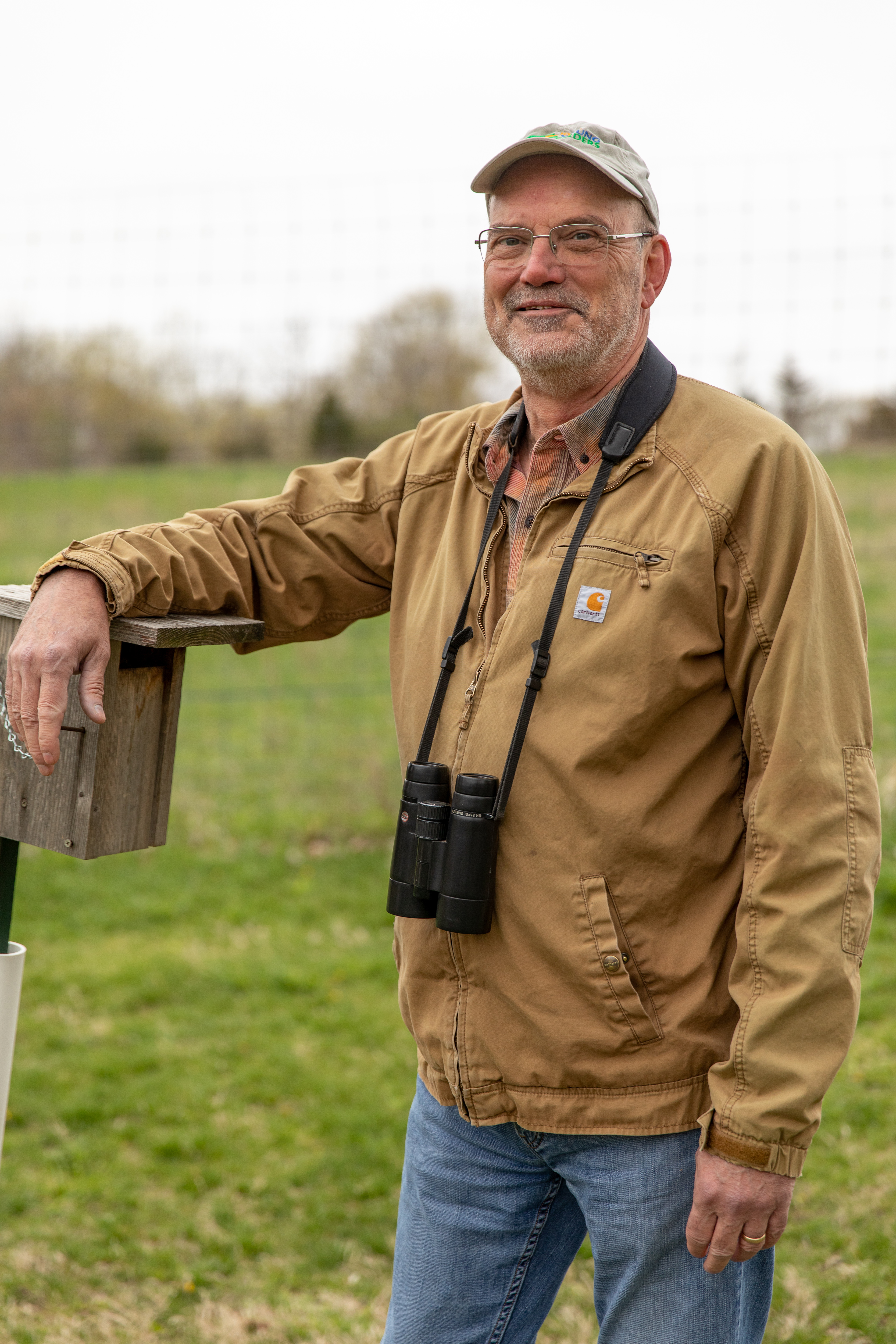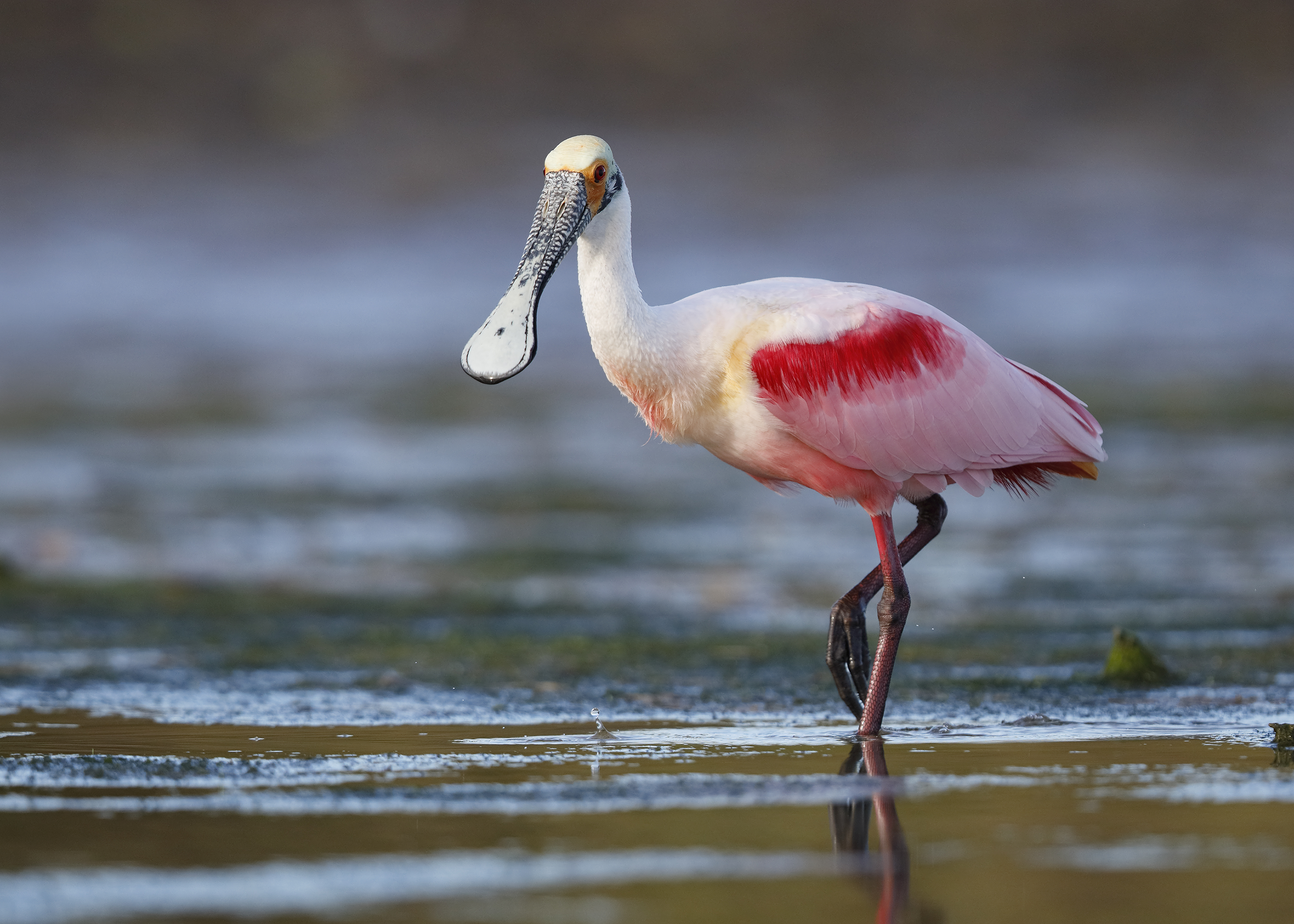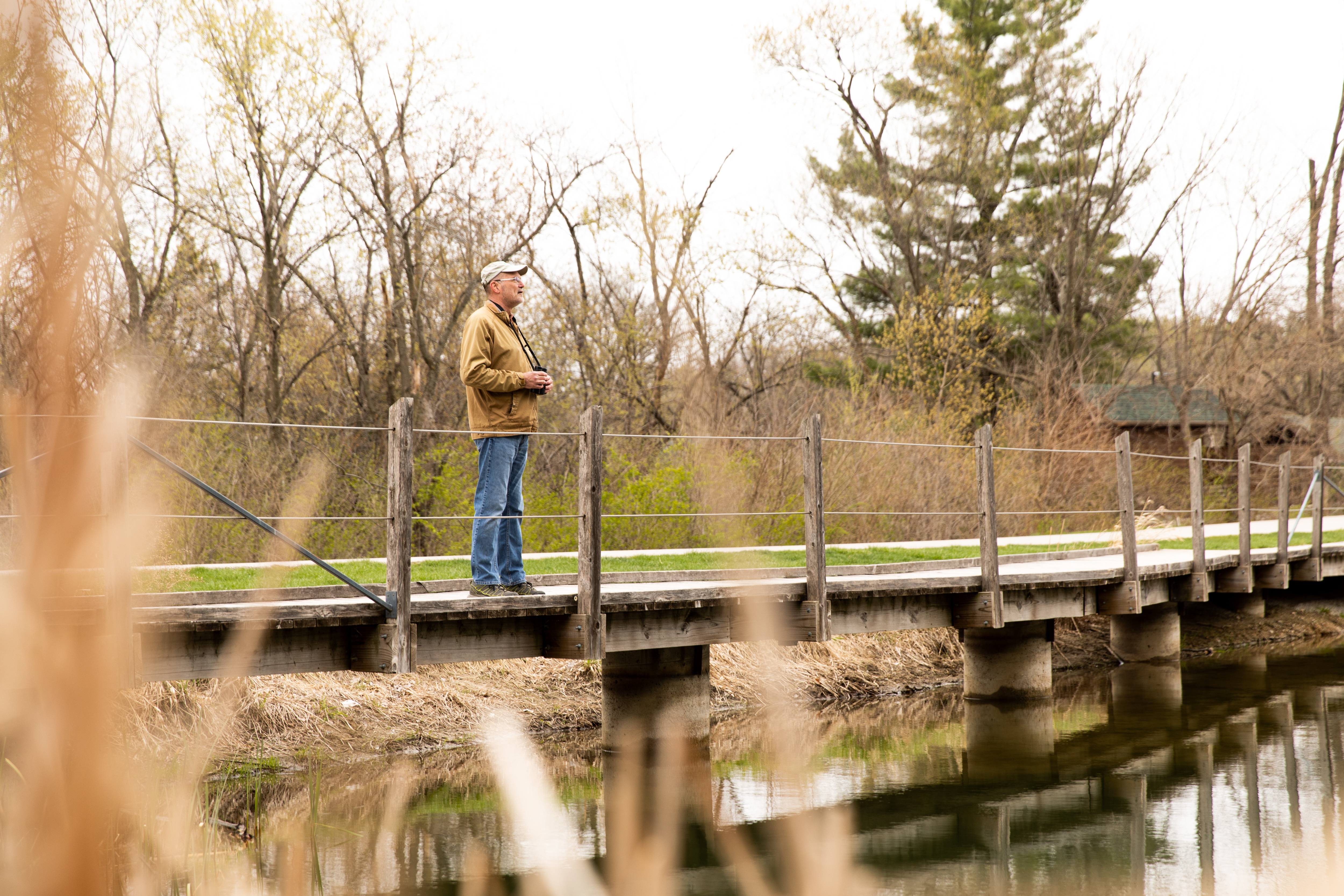AARP Hearing Center

On a spring Saturday morning, Dennis Thompson sports his usual ball cap, jeans and binoculars while doing what he loves: sharing his encyclopedic knowledge of Iowa birds with an eager crowd.
This West Des Moines group ranges in age from toddlers to senior citizens, from experienced birders to novices. Sightings are lively including a ruby-crowned kinglet, a downy woodpecker and a bald eagle soaring nearby.
It’s a familiar Saturday routine for Denny, 65, who led his first monthly walks for the Des Moines Audubon Society nearly 30 years ago.

Denny’s fascination with birds began in his growing up days on his family’s Prairie City farm. He always loved the outdoors, hunting and fishing, but his uncle also happened to be a professor of ornithology, a big word for the study of birds. He showed Denny “it was OK to look at birds. It wasn’t weird,” he recalls.
He still remembers using his first field guide to identify a dark-eyed junco, a genuine discovery moment for the young birder. But the distractions of high school and Iowa State University pulled him away from his hobby until he’d almost finished his computer science degree. When he discovered senior year that he had room for some electives, he added ornithology and, just like that, he was back into it – and never stopped.

Birding literally can happen anywhere and requires almost no gear, except maybe some “bins,” birding slang for binoculars. That ease of entry is something Denny especially likes about his hobby. “If you enjoy the wild birds of Iowa, then you are one of us! No degrees, no training, no experience required,” declares the website of the Iowa Ornithologists Union, which Denny currently leads as president.
With such a low bar to join in, birding’s popularity is understandable. More than 45 million people enjoy bird watching, according to a 2016 U.S. Fish and Wildlife survey. The pastime received a big boost this past year as Americans found it a safe outdoor activity to explore during the pandemic.
Iowa Bird Facts
- You can see more than 400 bird species in Iowa.
- About 200 species nest in the state.
- Iowa’s best birding happens each spring, when colors are brightest and songbirds are busy seeking mates.
- Birding Iowa on Facebook, the Iowa Ornithologist Union website or any Audubon Society bird club website in most larger Iowa cities are all great starting places.
- Join Denny Thompson on June 12 for the Des Moines Audubon Society’s Second Saturday bird walk at the Neal Smith National Wildlife Refuge. Meet at 8 a.m. at the Pleasant Hill McDonald’s on East University Avenue.
Some birders get quite competitive about racking up rare sightings, as depicted in the 2011 comedy movie, “The Big Year.” Denny’s style, though, is more laid back. Sure, he keeps the usual birding stats: countries visited, lifers (first species sightings), and even a backyard bird count. Last year, he personally spotted more than 300 distinct species here in Iowa.
But he’s just as happy volunteering and helping others get hooked. Fellow birder and friend Diane Dentlinger, a retired lawyer, admires that about him. “He really has a focus on mentoring other people or helping other people to learn,” she says.

One memorable Saturday, Diane remembers he told their surprised group to be on the lookout for a roseate spoonbill. The flamboyant pink bird normally hangs out in southern coastal areas. But that day Diane and a friend saw something pink rising from nearby water. Denny quickly aimed his spotting scope so others could take a look. “He’s all about ‘did you get a turn?’” says Diane. “ He’s not into it for himself, though he does enjoy it.”
Glenn Pille, a retired Iowa judge and birding newcomer, met Denny when he led a class last fall for Drake University’s Ray Society senior college. “He was reserved, but you could tell he had a passion for bird-watching, and he wanted us to feel that same joy,” he recalls. “I’m learning something new every time I go out, and he fosters that.”
Denny’s class had such a long waitlist that this spring he hosted three classes – and they still filled up.

He tries to get out into nature at least a few times each week. This time of year, he’ll be on the lookout for nesting birds that have returned from South America like the dickcissel or bobolink. He recommends birding first with the ears, then with the eyes. You have to look for the soaring hawks or eagles, he admits, “but with little birds, you’re just always listening.” He suggests learning the songs of even common species, such as the robin, as that can help identify the more unusual ones. A scarlet tanager, for example, is said to sound like a robin with a cold.
Learning those songs in years past meant hearing them in the field or relying on those who could mimic them. But the world of smart phones has introduced a wealth of wonderful birding apps. “It’s so easy to say, ‘OK, this is what we’ve just heard,’ “ he says about using a birdcall app. Others like the free Audubon Bird Guide app or eBird, a crowdsourcing app, can
Ready to try birding?
Denny says all you need are a few good reference tools like a bird guidebook or a smartphone app plus a good pair of binoculars. Mornings with light winds offer better chances for sightings.
Denny’s love of birding has taken him far beyond Iowa’s borders. He recalls traveling first in 1983 to the Sandhills of Nebraska, what he jokingly calls “my first big exotic bird trip.” In the years since, he and his wife Cecille have traveled around the United States as well as to Canada, Trinidad, Cuba, Latin America, Ecuador, Cambodia and Borneo. Africa, especially Madagascar, waits on his wish list, and he hopes to go sooner rather than later before some species simply vanish.
In fact, ask him what’s changed most about birding, and he’ll reply rather starkly, “Fewer birds." A major North American bird study in 2019 estimated 3 billion birds had disappeared since the 1970s.
“Growing up, remember how we all could see bugs around the street lights? Now you just don’t see bugs anymore. So something’s happened,” he says, citing just one example of habitat changes. And as flying insects decline, so do populations of swallows and nighthawks that feed on them.
Iowa, though, can brag about its success in repopulating some species, Denny notes, like the bald eagle, ospreys and trumpeter swans, as well as luring Sandhill cranes to again nest here.

Denny often mentions the importance of protecting wildlife habitat with his bird walk guests. “Even if they don’t go on another bird walk – and I hope they do – they’ll have a positive feeling about the outdoors going forward” and may want to step in to help preserve it, he reasons.
Now thanks to retirement, Denny can spend even more time in nature. From his Johnston home, it’s a relatively short drive to prime central Iowa birding spots like Saylorville Lake or Chichaqua Bottoms. For him, birding is a personal win-win situation: feeding his passion while keeping him physically active, “and while I can still be active, I really want to take advantage of that.”
Next Month:
A trailblazing career as a Des Moines police officer eventually led our next Hidden Gem to high-profile leadership posts both in Hispanic outreach and neighborhood relations. Yet he always had time for community volunteering, too. So when a freak off-duty accident forced him to retire early, his passion to serve the community led to his new career. Learn how this 68-year-old works to showcase the cultural talents of the city’s Latino community.































































